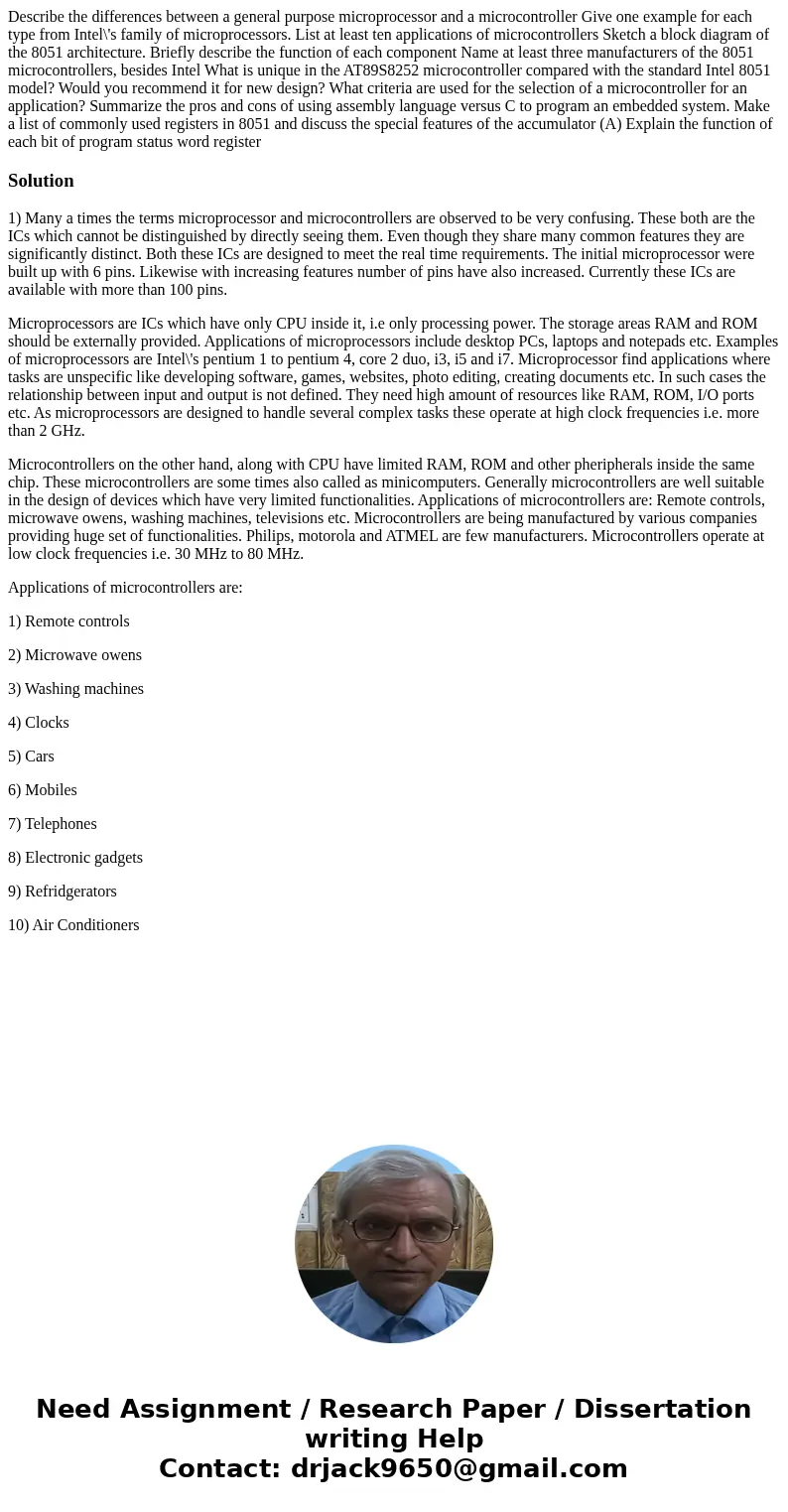Describe the differences between a general purpose microproc
Solution
1) Many a times the terms microprocessor and microcontrollers are observed to be very confusing. These both are the ICs which cannot be distinguished by directly seeing them. Even though they share many common features they are significantly distinct. Both these ICs are designed to meet the real time requirements. The initial microprocessor were built up with 6 pins. Likewise with increasing features number of pins have also increased. Currently these ICs are available with more than 100 pins.
Microprocessors are ICs which have only CPU inside it, i.e only processing power. The storage areas RAM and ROM should be externally provided. Applications of microprocessors include desktop PCs, laptops and notepads etc. Examples of microprocessors are Intel\'s pentium 1 to pentium 4, core 2 duo, i3, i5 and i7. Microprocessor find applications where tasks are unspecific like developing software, games, websites, photo editing, creating documents etc. In such cases the relationship between input and output is not defined. They need high amount of resources like RAM, ROM, I/O ports etc. As microprocessors are designed to handle several complex tasks these operate at high clock frequencies i.e. more than 2 GHz.
Microcontrollers on the other hand, along with CPU have limited RAM, ROM and other pheripherals inside the same chip. These microcontrollers are some times also called as minicomputers. Generally microcontrollers are well suitable in the design of devices which have very limited functionalities. Applications of microcontrollers are: Remote controls, microwave owens, washing machines, televisions etc. Microcontrollers are being manufactured by various companies providing huge set of functionalities. Philips, motorola and ATMEL are few manufacturers. Microcontrollers operate at low clock frequencies i.e. 30 MHz to 80 MHz.
Applications of microcontrollers are:
1) Remote controls
2) Microwave owens
3) Washing machines
4) Clocks
5) Cars
6) Mobiles
7) Telephones
8) Electronic gadgets
9) Refridgerators
10) Air Conditioners

 Homework Sourse
Homework Sourse